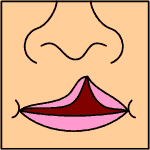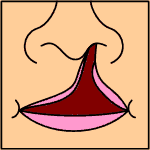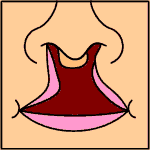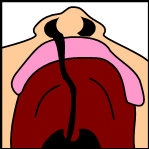More than 500 years ago, Spanish explorers settled Margarita Island, near Venezuela. Today, 1 in every 2,000 of their descendants born on the island has dry, scaly skin, brittle hair, missing or peg-shaped teeth, partial fusion of the fingers, and cleft lip or palate. Richard Spritz, a geneticist at the University of Colorado in Denver, thinks he knows why.
In the August NATURE GENETICS, a team led by Spritz reports finding the mutated gene responsible for the syndrome. The recessive mutation also may confer an antiviral advantage to people who carry one copy of this gene, he adds.
Cleft lip and palate are among the most common birth defects in the world. Seventy percent of these defects occur as isolated abnormalities. They show up in as many as 1 in 500 births worldwide, but on Margarita Island, the rate is nearly three times as high.
Spritz' team sought a single gene behind the island's syndrome. The group suspected that the condition would provide a simple model for the more wide-spread problem of cleft lip and palate.
By comparing unaffected people to afflicted islanders and others with a similar syndrome, the team narrowed its gene search to an area on chromosome 11 and eventually to a gene called PVRL1. All islanders with the syndrome had mutations of this gene, which normally encodes a cell surface protein, nectin-1. Spritz' team reports that in mouse embryos, nectin-1 aids development of the palate, teeth, and skin--the same tissues altered in the affected islanders.
In people, nectin-1 also plays a role in herpesvirus infections. "[The virus] uses it like a handhold," Spritz says. "Herpesvirus basically grabs the sugar on nectin-1 and holds on long enough to punch a hole in the cell and get in."
Spritz says that people with one copy of the mutation might be deficient in nectin-1 without showing the syndrome. They may be at lower-than-normal risk for herpesvirus, an advantage that may explain why the mutation has persisted.
Any advantage, however, is probably outweighed by the syndrome's severity, says pediatrician Jacqueline Hecht of the University of Texas-Houston. The isolation of the island's population could alone account for the gene's frequency, she says, comparing the situation to the high rate of dwarfism among the Amish, a closed society in the United States.
Patricia Spear, a microbiologist at Northwestern University Medical School in Chicago, agrees. She notes that herpesviruses use several surface proteins to enter cells. "It is not yet clear whether absence of only one of these receptors, such as nectin-1, will confer resistance," she says.
Spritz says that such tests are next on his agenda. He's also investigating mutations in two genes similar to PVRL1 as candidates for the cause of cleft lip and palate in people without the Margarita Island syndrome.
COPYRIGHT 2000 Science Service, Inc.
COPYRIGHT 2000 Gale Group





